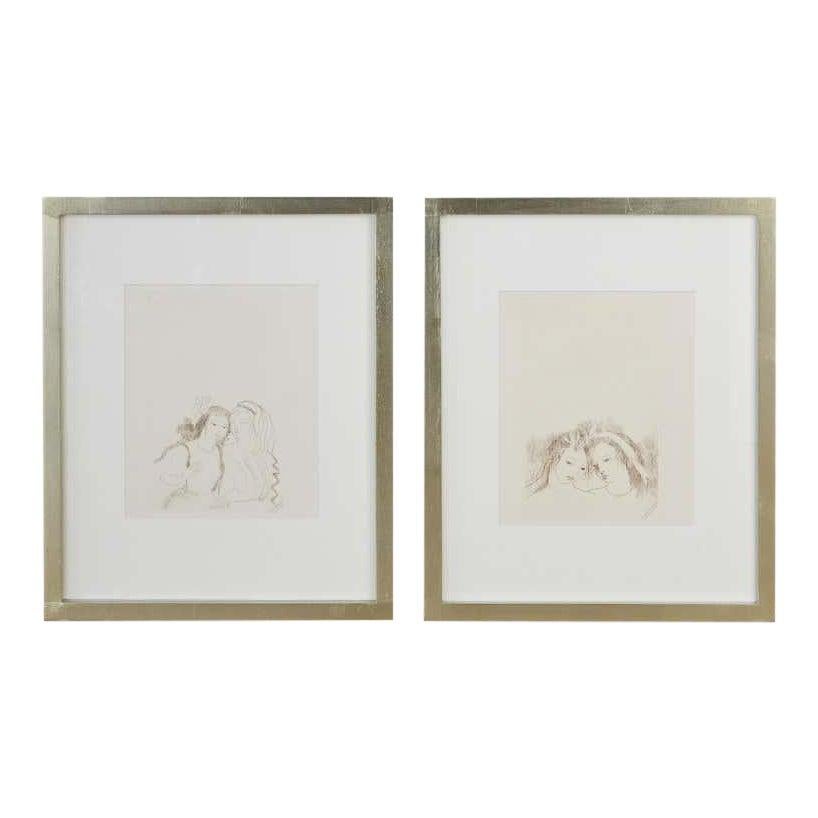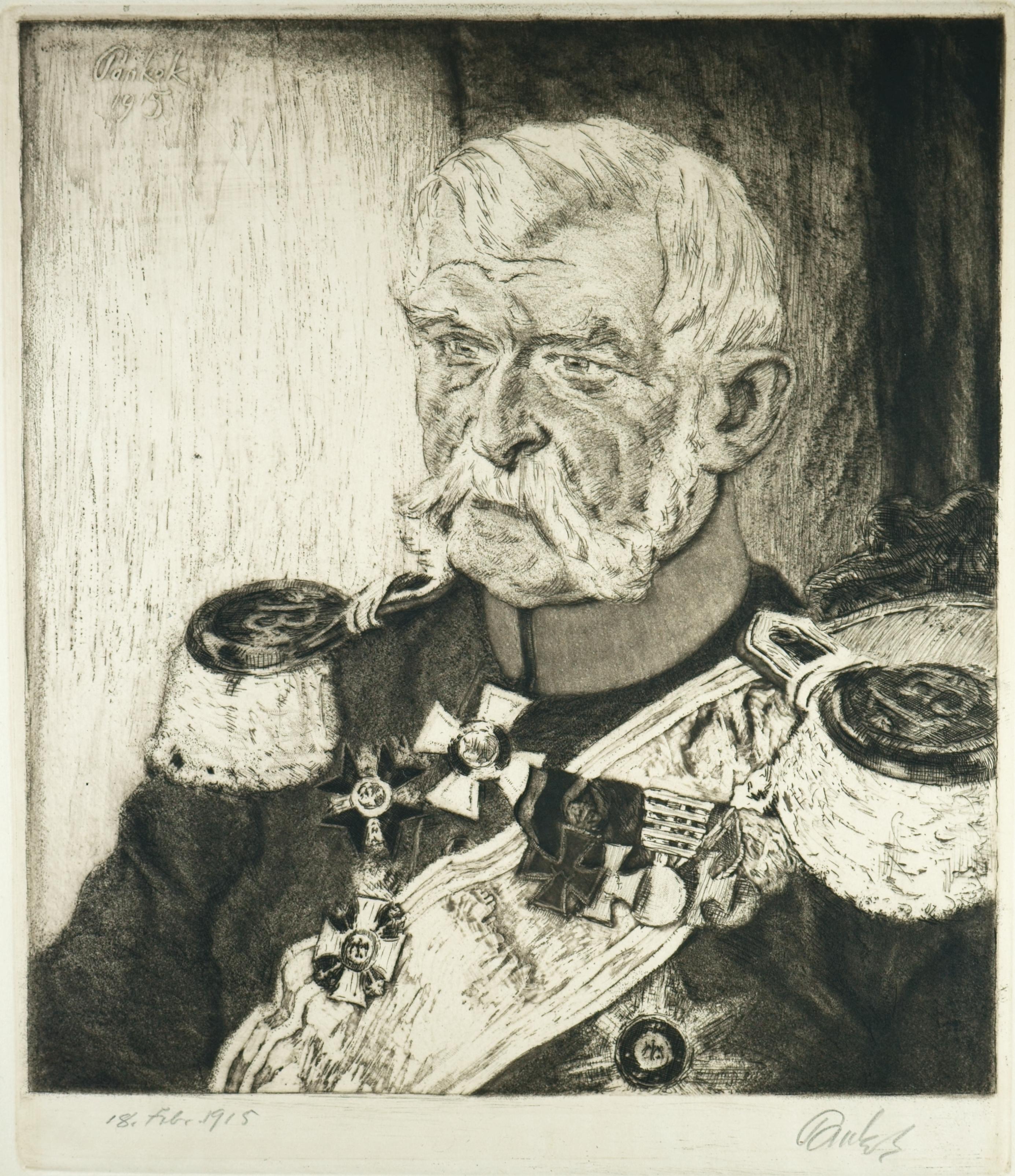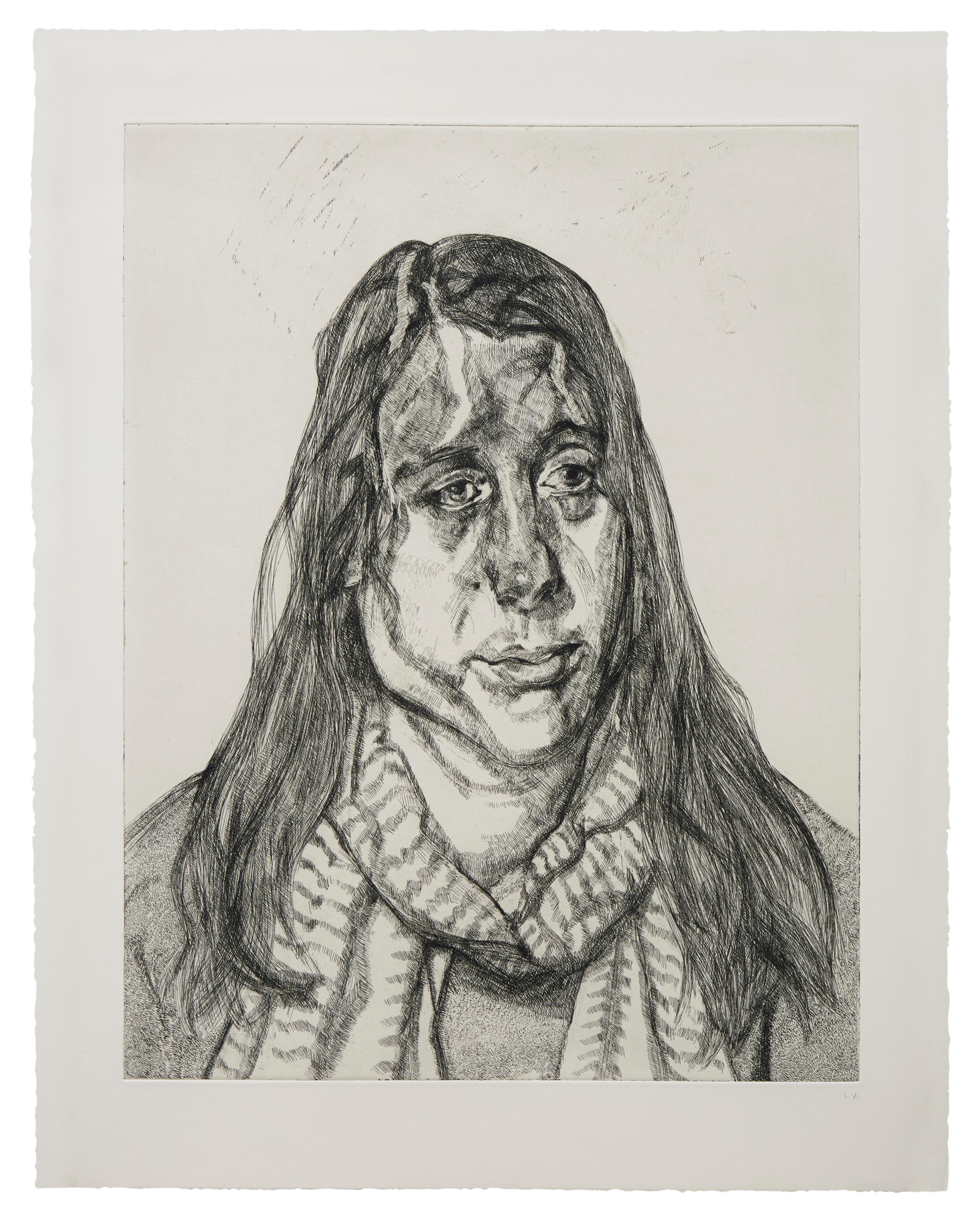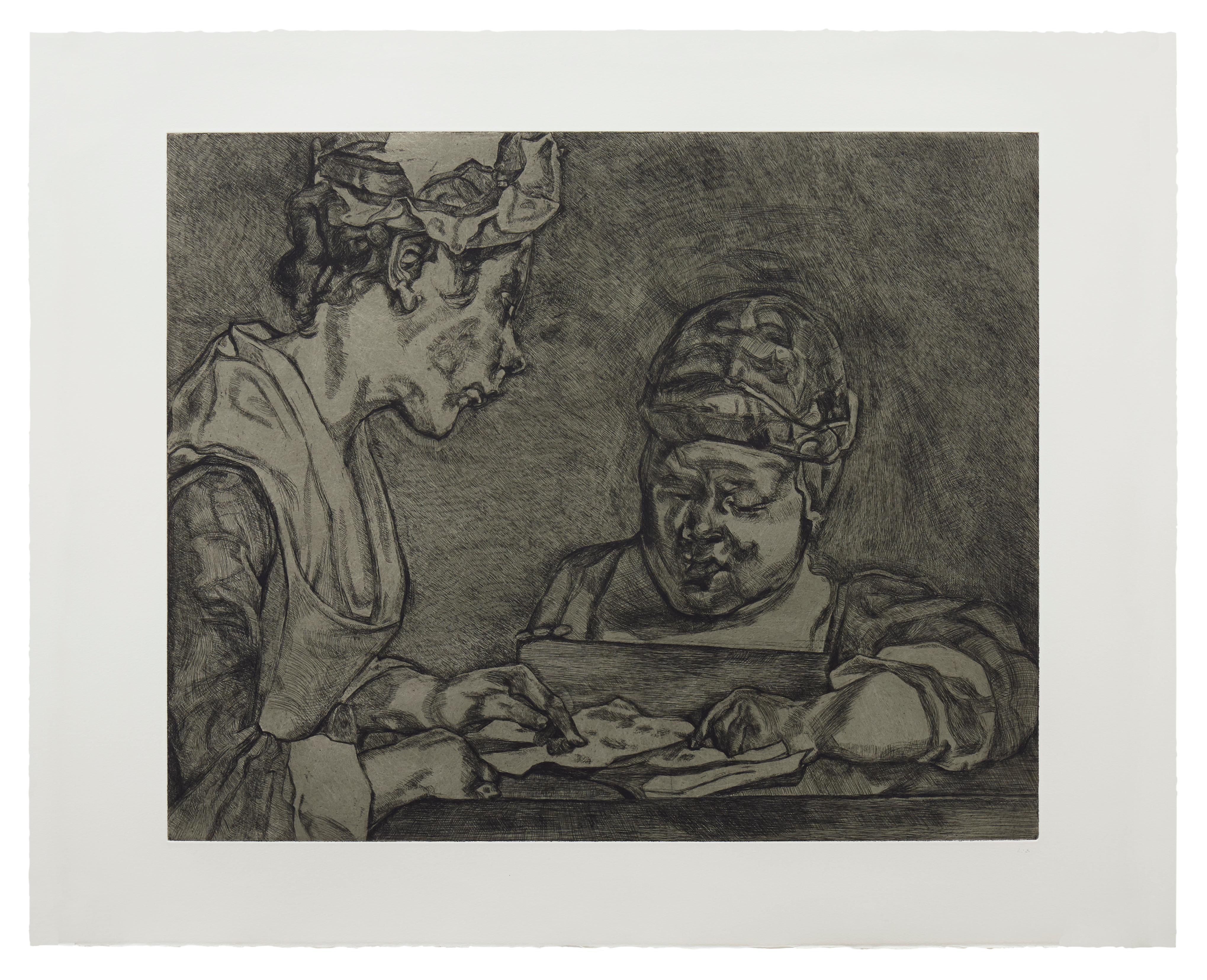Items Similar to Portrait - Original Etching on Paper by Annibale Carraci - 20th Century
Want more images or videos?
Request additional images or videos from the seller
1 of 3
Annibali CarrachePortrait - Original Etching on Paper by Annibale Carraci - 20th Century20th Century
20th Century
About the Item
Portrait is an original Hand-colored etching on brownish paper realized by Annibale Carracci (Annibal Carrache).
Signed on the plate on the lower left.
The state of preservation is very good.
The artwork represents the profile of two young girls, skillfully created through precise and delicate strokes. It is characterized by harmonious and congruous colors.
- Creator:Annibali Carrache
- Creation Year:20th Century
- Dimensions:Height: 7.09 in (18 cm)Width: 9.85 in (25 cm)Depth: 0.04 in (1 mm)
- Medium:
- Period:
- Framing:Framing Options Available
- Condition:Insurance may be requested by customers as additional service, contact us for more information.
- Gallery Location:Roma, IT
- Reference Number:
About the Seller
4.9
Platinum Seller
These expertly vetted sellers are 1stDibs' most experienced sellers and are rated highest by our customers.
1stDibs seller since 2017
6,693 sales on 1stDibs
Typical response time: 2 hours
- ShippingRetrieving quote...Ships From: Rome, Italy
- Return PolicyA return for this item may be initiated within 14 days of delivery.
More From This SellerView All
- Profile - Original Etching by Giacomo Porzano - 1972By Giacomo PorzanoLocated in Roma, ITProfile is an original modern artowork realized by the Italian artist Giacomo Porzano (1925-2006) in 1972 Black and white etching. Hand-signed and dated on the lower right. Number...Category
1970s Contemporary Portrait Prints
MaterialsEtching
- Profile - Original Etching by Giacomo Porzano - 1972By Giacomo PorzanoLocated in Roma, ITProfile is an original modern artowork realized by the Italian artist Giacomo Porzano (1925-2006) in 1972. Black and white etching. Hand-signed and dated on the lower right. Numbe...Category
1970s Contemporary Portrait Prints
MaterialsEtching
- The Maid - Original Etching by Andrea Jacquin - Mid 20th CenturyLocated in Roma, ITThe Maid is an original etching on ivory-colored paper realized by Andrea Jacquin in the mid-20th century. Plate-signed Very good conditions.Category
Mid-20th Century Modern Figurative Prints
MaterialsEtching
- Profile - Etching by Giacomo Porzano - 1972By Giacomo PorzanoLocated in Roma, ITProfile is an original modern artowork realized by the Italian artist Giacomo Porzano (1925-2006) in 1972 Black and white etching. Hand-signed and dated on the lower right. Number...Category
1970s Contemporary Portrait Prints
MaterialsEtching
- Profile - Etching by Giacomo Porzano - 1972By Giacomo PorzanoLocated in Roma, ITProfile is an original modern artwork realized by the Italian artist Giacomo Porzano (1925-2006) in 1972. Black and white etching. Hand-signed and dated on the lower right. Number...Category
1970s Contemporary Figurative Prints
MaterialsEtching
- Les Chevaliers - Original Etching by Sébastien Leclerc - 17th CenturyLocated in Roma, ITLes Chevaliers is an original print, realized in the second half of 17th Century by the French artist Sébastien Leclerc (1637-1714). Etching on pap...Category
17th Century Old Masters Portrait Prints
MaterialsEtching
You May Also Like
- "Two Women" Pair EtchingsBy Marie LaurencinLocated in Rio Vista, CAElegant pair of etchings by Marie Laurencin (French 1883-1956) from the "Poemes de Sapho" published in 1950 ref. 273. Each beautifully mounted in fram...Category
20th Century Modern Portrait Prints
MaterialsEtching
- General Wilhelm von Blume - Visionary retrospective -Located in Berlin, DEBernhard Pankok (1872 Münster - 1943 Baierbrunn), General Wilhelm von Blume, 1915, aquatint etching, 34 x 29.5 cm (sheet size), 26 x 22 cm (plate size), signed in the plate at upper left, in pencil at lower right and dated in pencil at lower left. - At lower left old collection stamp, at the right broad margin with a small spot, otherwise very good condition. About the artwork The 1915 aquatint etching of General Wilhelm von Blume is based on a 1912 oil painting in the LWL-Museum für Kunst und Kultur in Münster. A second oil portrait of the general by Pankok is in the Staatsgalerie Stuttgart. When Pankok painted the first oil portrait in 1912, the general had already been retired for 16 years. It is therefore a retrospective portrait. Accordingly, the orientation of his head is such that he is looking back in both the oil painting and the etching. Without fixing on anything in particular, he looks thoughtfully inwards and reflects on his life. Uniformed and highly endowed, it is his military activities in particular that he is reviewing attentively and, as his gaze reveals, quite critically. Pankok has literally written the sum of his experiences on Wilhelm von Blume's face: The physiognomy is a veritable landscape of folds, furrows, ridges and gullies, all the more striking against the flat background. It is clear that each of the medals was also won through suffering. However, by breaking the boundaries of the picture, his bust appears as an unshakable massif, which gives the general a stoic quality. The fact that the design of the portrait was important to Pankok can be seen from the different versions, the present sheet being the third and probably final revision, which Pankok dates precisely to 18 February 1915. Compared with the previous state, the light background now has a dark area against which the sitter's face stands out, the dark background in turn combining with the uniform to create a new tension in the picture. Pankok's taking up of the portrait of the high-ranking military veteran and its graphic reproduction can also be seen in relation to the First World War, which had broken out in the meantime. In the face of modern weapons of mass destruction, Wilhelm von Blume's warfare and military writings were relics of a bygone, more value-oriented era. About the artist After studying at the Düsseldorf Art Academy from 1889 to 1891 under Heinrich Lauenstein, Adolf Schill, Hugo Crola, and Peter Janssen the Elder, Bernhard Pankok went to Munich in 1892, where he worked primarily as a graphic artist for the two major Jugendstil magazines "Pan" and "Jugend," which established his artistic success. Through this work he met Emil Orlik, with whom he had a lifelong friendship. In 1897, he exhibited his first furniture, and in 1898, together with Richard Riemerschmid, Bruno Paul and Hermann Obrist...Category
1910s Realist Portrait Prints
MaterialsEtching
- Half-length portrait of a man with beard - A Rembrandt of the 18th century -Located in Berlin, DEJohann Friedrich Bause (1738 Halle a. d. Saale - 1814 Weimar). Half-length portrait of a man with beard and cap after a drawing by Christian Wilhelm Ernst Dietrich. Etching and coppe...Category
1780s Baroque Figurative Prints
MaterialsEtching
- Balaclava - The target in sight -Located in Berlin, DEHeinrich Haberl (1869 Passau to 1934 Munich), Sturmhaube, c. 1900. drypoint, 14 x 10 cm (platemark), 28 x 21 cm (sheet size), 39 x 29 cm (passe-partout), titled "Sturmhaube" in lead at lower left and inscribed "Kaltnadelradierung", signed and locally inscribed "Heinrich Haberl Mchn. [Munich]" at lower right, inscribed again in lead on verso and with old collection stamp. - slightly darkened, fixed and mounted - The target in sight - About the artwork The theatrical "role-portrait" is to be seen against the background of the Rembrandt cult, which reached its climax at the end of the 19th century. The soldier seems to have stepped straight out of Rembrandt's Night Watch (1642) to fix something outside the picture with an alert and ready gaze. The steeply rising brim of the morion frames the gaze and thus perspectivises it as the actual 'pictorial action'. The gaze represents both the vigilant defence and the visionary goal of the battle. Not only the subject, but also the style of the etching needle reflect Rembrandt's understanding of the times. Strong contrasts of light and dark are created in a virtuoso free stroke, without losing the effect of the reflections on the helmet and in the eyes. This shows a kinship with the early prints of Lovis Corinth, who also saw himself as an artist in the role of the knight. Against this background, Haberl's picture can also be seen as a representation of his artistic self-image. About the artist Heinrich Haberl first attended the art school in Nuremberg and from 1892 studied at the Munich Academy. There he was a master student of Johann Leonhard von Raab, Rudolf von Seitz, Franz von Defregger...Category
Early 19th Century Realist Figurative Prints
MaterialsEtching
- Portrait HeadBy Lucian FreudLocated in New York, NYLucian Freud Portrait Head 2001 Etching on Somerset Textured White paper 28 1/2 x 22 1/2 inches; 72 x 57 cm Edition of 46 Initialed and numbered in graphite (lower recto) Frame available upon request Published by Matthew Marks Gallery...Category
Early 2000s Contemporary Portrait Prints
MaterialsEtching
- After ChardinBy Lucian FreudLocated in New York, NYLucian Freud After Chardin 2000 Etching on White Somerset Textured Paper 30 3/4 x 37 3/4 inches; 78 x 96 cm Edition of 46 Initialed and numbered in graphite (lower recto) Frame available upon request Published by Matthew Marks Gallery...Category
Early 2000s Contemporary Portrait Prints
MaterialsEtching
Recently Viewed
View AllMore Ways To Browse
Annibale Carracci
Three Little Birds
Vintage Bar Posters
Vintage Farm Sets
Vintage Illustrated Maps
Vintage Illustrated Map
Vintage Farm Set
Chagall Lithograph Poster
Ballet Ballerina Painting
Huge Poster
Large Dali Print
Giacometti Figure
Vintage Church Plates
Large Italian Coast Painting
Oil Of St Raphael
Painting Dove Of Peace
Magritte Lithograph
Bike Light




